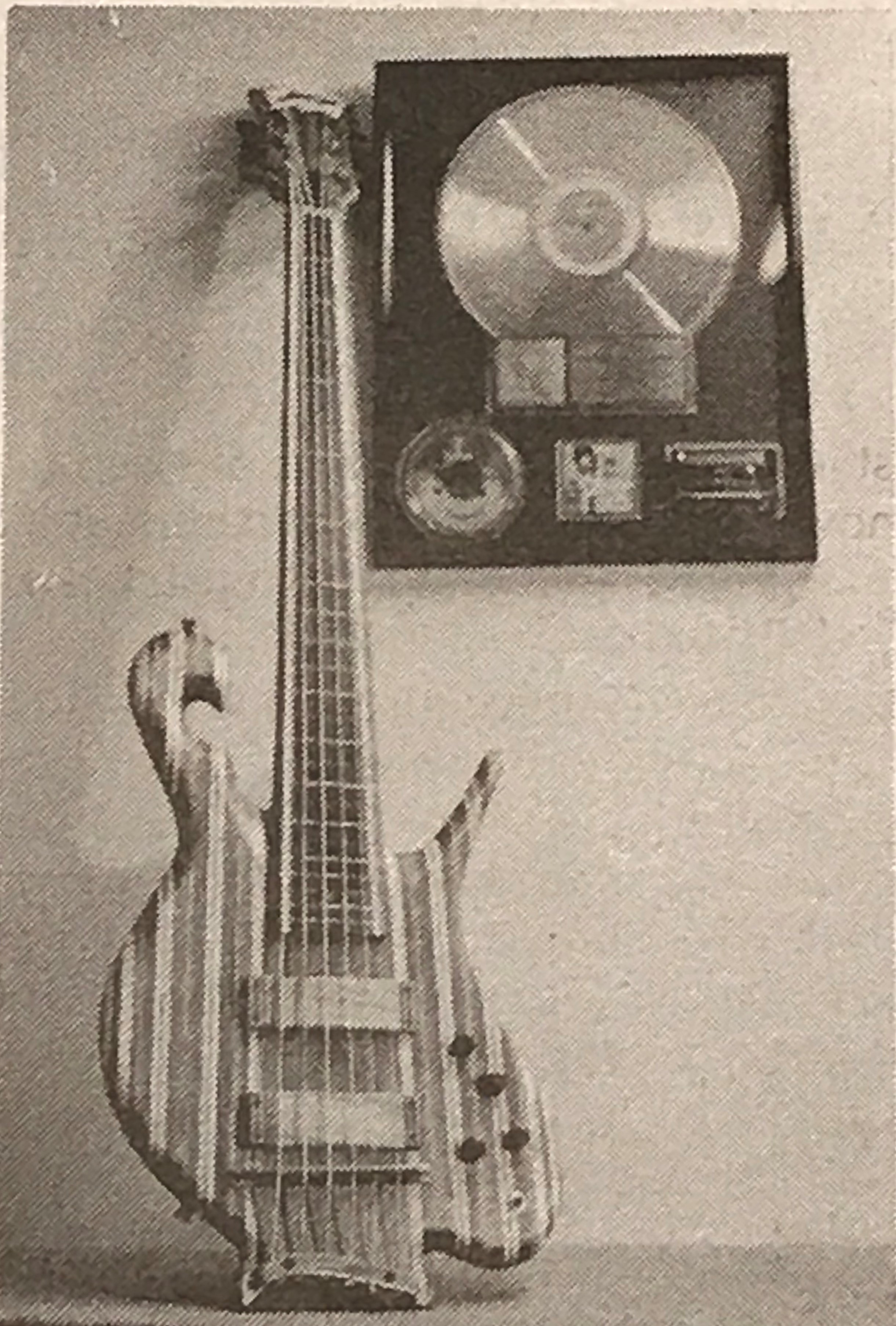Carl Thompson
The Evolution of a Bass Maker
by Joy Portugal

“Everybody in the rock ‘n’ roll business at that time came into Danny’s shop on 48th Street. The Allman Brothers, Frank Zappa, Eric Clapton, Paul Simon, etc. While working at Dan’s shop I also got to meet all my “heroes” and work on their guitars – Kenny Burrell, Jim Hall, Tal Farlow, Grant Green and the studio players: Barry Galbraith, Allan Hamlon, George Barnes, etc. Hey, I even worked on some of Les Paul’s own guitars,” Thompson told Allegro. “Imagine – the kid from Pitcairn in the big time.
“Eddie Diehl – probably one of the greatest jazz guitar players who ever lived – was working for Danny at that time. I watched him work and Eddie talked to me and helped me with things. And the next thing I knew, I was doing it. Later, I set up a little shop where I did repairs and setup work on guitars and basses.” In the early ’70s, a loan from the Local 802 Credit Union helped him buy wood and some tools.
In 1974 Thompson was asked to double on bass on a gig in Bay Ridge, and borrowed one of Bob Cranshaw’s Fender basses. “I played three nights on it – Friday, Saturday and Sunday – and on Monday morning I came into my shop and decided to see if I could build an electric bass with a better balance and a more comfortable playability. I got a book from the library on the life and work of Antonio Stradivarius – not that he ever made an electric bass, but he sure knew about building musical instruments.”
When he first got started on this project, Thompson says, his friends tried to dissuade him. “They said, ‘We’re all playing Fenders. They’re okay.’ I said, ‘It’s not that they’re okay. I think you guys have just gotten used to playing on them.’
“Before I made that first instrument I had never used a gouge or any kind of carving chisels. I can assure you that first bass was a real project. (I still have the number one bass and the number one guitar.) After I’d made a few instruments my friend Stanley Clarke wanted me to make him a piccolo bass, something tuned up an octave higher. When he came out with his hit album, “School Days,” he mentioned my name in the liner notes, thanking me for building the piccolo bass, and he almost singlehandedly made me somewhat of a famous bass maker.
“Around the same time Anthony Jackson, a very hot studio player, had an idea for a six-string bass: the regular bass – E, A, D, G – plus a low B and a high C string. We built that first six-string for Anthony, and now all the major companies build six-string basses. “At the beginning a lot of my friends, guitarists and bass players, spread the word – and the next thing I knew, I was making a lot of basses for rock, jazz and studio players. It just became my life.”

Despite the fact that he doesn’t advertise, “I’m always backed up,” Thompson says. “And I don’t have any big machinery of any kind, no computerized routers. I work with regular tools. I hand carve all the bodies; make the necks, everything.
“A lot of builders talk about the molecular structure of the wood or how, if you use too many glue joints, you zap the energy from the wood, or this kind of bridge gets a certain sound, or this pickup is better than that one, or whatever. I haven’t got a clue. All I know is, it either is or it isn’t. If it isn’t, I just keep working on it until I think it is. And when I think it is, I turn it over to you – and if you think it is, then we’re both happy.”
Thompson’s ability as a builder is probably related to the fact that “my dad had this incredible mechanical mind – a machinist, a woodworker, an electronics whiz and, I might add, a pretty fair musician. My five brothers were all very mechanical, also. I was the only one in the family that didn’t get into all of that. I just wanted to play the guitar. I guess it was in my genes and just came out later when I started building.”
Most important, he says, “is that I grew up in a family that nurtured me and encouraged me in whatever I was going to do. And if the music business were different, I’d probably still be playing. But at the time when I made that first bass, things were changing. A lot of little clubs were disappearing and the recording business was changing.

“P.S, I’d like to thank Russell George, my friend and musical mentor, for encouraging me to come to New York in the first place.”


Leave a Reply
You must be logged in to post a comment.